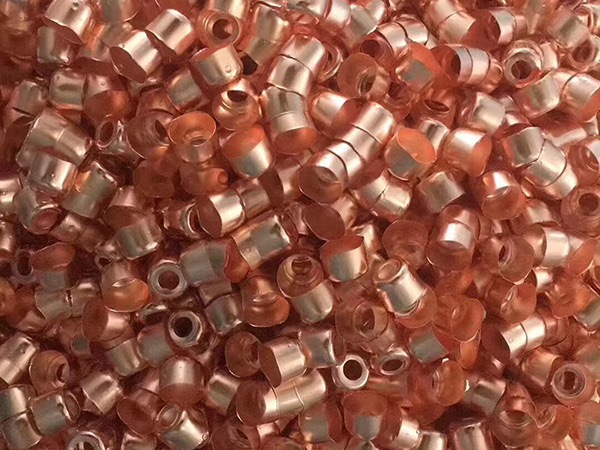Smoothing
Overall, vibratory finishing offers a wide range of options for modifying the surface properties of parts, making it a versatile and cost-effective solution for a variety of manufacturing applications. By selecting the right media and process for the job, manufacturers can achieve the precise finish they need to meet the demands of their customers and stay competitive in their industry.
In some applications, a matt finish surface with increased surface roughness is desired. This property can be achieved with ceramic media and is particularly important in the automotive industry for applications such as friction pads. By using the right type of media and finishing process, manufacturers can achieve a surface that is not only functional but also visually appealing.
One of the key benefits of vibratory finishing is the ability to modify the surface properties of parts using different types of media. Depending on the application and material being finished, different types of media may be selected to achieve the desired finish. For example, ceramic media is a popular choice for deburring and pre-painting finishing, as it offers an economical way to achieve a smooth surface without the need for costly additional processes. This type of media is especially effective at removing cutting marks left behind by machining or wheel grinding processes, which are common in many component manufacturing operations. In contrast, plastic media is often preferred for soft metal materials such as aluminum, copper, and zamak3, as it can deliver a superior pre-plating finish without damaging the metal surface. By using the right media for the job, manufacturers can achieve a high-quality finish that meets their precise specifications and requirements. |  |
South West Englandis one of nine officialregions of England. It consists of the counties ofBristol,Cornwall(including theIsles of Scilly),Dorset,Devon,Gloucestershire,SomersetandWiltshire. Large cities and towns in the region includeBristol,Bournemouth,Cheltenham,Exeter,Gloucester,PlymouthandSwindon. It is geographically the largest of the nine regions of England covering 9,200 square miles (23,800 km2),[1]but the third least-populous, with approximately five million residents.
The region includes theWest Countryand much of the ancient kingdom ofWessex. It includes two entirenational parks,DartmoorandExmoor(a small part of theNew Forestis also within the region); and fourWorld Heritage Sites:Stonehenge, theCornwall and West Devon Mining Landscape, theJurassic Coastand theCity of Bath. The northern part of Gloucestershire, nearChipping Campden, is as close to the Scottish border as it is to the tip of Cornwall.[2]The region has by far the longest coastline of any English region.
The region is at thefirst levelofNUTSforEurostatpurposes. Key data and facts about the region are produced by theSouth West Observatory. Following the abolition of theSouth West Regional AssemblyandGovernment Office, local government coordination across the region is now undertaken bySouth West Councils.
The region is known for its richfolklore, including the legend ofKing ArthurandGlastonbury Tor, as well as its traditions and customs. Cornwall has its own language,Cornish, and some regard it as aCeltic nation. The South West is known forCheddar cheese, which originated in theSomersetvillage ofCheddar; Devoncream teas,crabs,Cornish pasties, andcider. It is home to theEden Project,Aardman Animations, theGlastonbury Festival, theBristol International Balloon Fiesta,trip hopmusic and Cornwall'ssurfingbeaches. The region has also been home to some of Britain's most renowned writers, includingDaphne du Maurier,Agatha ChristieandEnid Blyton, all of whom set many of their works here, and the South West is also the location ofThomas Hardy's Wessex, the setting for many of his best-known novels.
